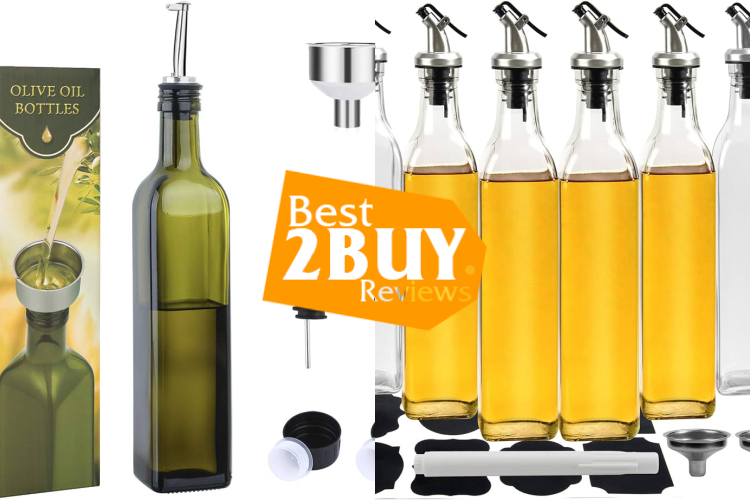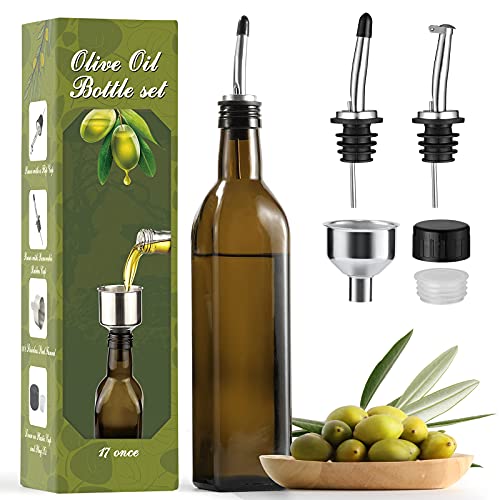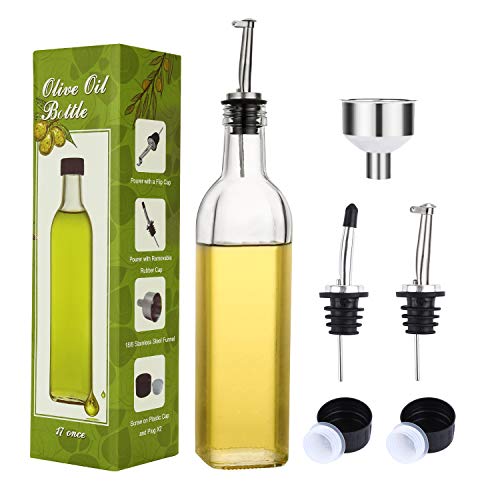The Essential Guide to Oil Dispensing Bottles: Functionality, Types, and Choosing the Right One

- 1. The Essential Guide to Oil Dispensing Bottles: Functionality, Types, and Choosing the Right One
- 1.1. What Are Oil Dispensing Bottles?
- 1.2. Functionality
- 1.3. Types of Oil Dispensing Bottles
- 1.3.1. Pour Spout Bottles
- 1.3.2. Glass Bottles
- 1.3.3. Cruets
- 1.3.4. Press-and-Measure Bottles
- 1.4. Choosing the Right Oil Dispensing Bottle
- 1.4.1. Material
- 1.4.2. Capacity
- 1.4.3. Spout Design
- 1.4.4. Sealing Mechanism
- 1.4.5. Cleaning Ease
- 1.5. Conclusion
Oil dispensers are essential tools in the kitchen, providing ease, accuracy, and a touch of elegance in managing different oil varieties. Whether you're a dedicated home chef or a seasoned professional, selecting the appropriate oil dispenser can elevate your culinary journey by ensuring precision in measurements. This piece explores the features, varieties, and guidance on selecting the ideal oil dispensing bottle to meet your cooking requirements.
What Are Oil Dispensing Bottles?
Oil dispensing bottles are crafted to efficiently dispense a variety of oils in a controlled manner. While they are frequently utilized in kitchens and culinary environments, their utility extends to various other settings. These bottles are designed to offer a tidy and convenient method for pouring or dispensing oils, including but not limited to olive oil, vegetable oil, cooking oil, and other liquid condiments.
Functionality
Oil dispensing bottles are designed to streamline the process of pouring and measuring different types of cooking oils. They serve several key functions:
- Precision Pouring: One of the primary functions of oil dispensing bottles is to provide a controlled and precise pour. This is particularly important when recipes call for specific measurements of oils, such as olive oil, vegetable oil, or specialty oils like truffle oil.
- Preservation: Many oil dispensers are designed to protect the contents from air and light exposure, which can cause oils to degrade over time. This preservation helps maintain the quality and flavor of the oils, ensuring that they stay fresh for longer periods.
- Aesthetic Appeal: Beyond their functional aspects, oil dispensing bottles often contribute to the aesthetics of the kitchen. Sleek and stylish designs can add a touch of elegance to your cooking space, making them both practical tools and decorative elements.
Types of Oil Dispensing Bottles
Pour Spout Bottles
One prevalent type of oil dispenser is the pour spout bottle. Characterized by a spout or nozzle, these bottles enable controlled pouring of oil. They often come equipped with a stopper or lid, ensuring the oil remains protected from external elements when not in use. This design not only facilitates precise pouring but also helps in maintaining the oil's freshness.
Glass Bottles
Glass oil dispensers are favored for their aesthetic appeal and functionality. Available in diverse shapes and sizes, these bottles are equipped with a pour spout for easy dispensing. The use of glass provides an excellent barrier against light and air, preserving the oil's quality over time. The transparency of glass also allows users to monitor the oil level and quality, adding both practicality and elegance to the kitchen.
Cruets
Cruets represent another distinct category of oil dispensers. Defined by their narrow neck, cruets are commonly used for serving oils and vinegars. They are available in various materials such as glass, ceramic, or stainless steel. Cruets may feature a spout or a cork for controlled pouring, adding a touch of sophistication to the dining experience. The diverse materials and designs allow users to choose a cruet that aligns with their style preferences.
Press-and-Measure Bottles
For those who appreciate precision in their culinary endeavors, press-and-measure bottles offer a valuable feature. These dispensers come with a press-and-measure mechanism, allowing users to dispense a precise amount of oil with each press. This functionality is particularly useful for recipes that require specific measurements, ensuring accuracy and consistency in cooking.
Choosing the Right Oil Dispensing Bottle
Selecting an oil dispensing bottle involves considering several factors, including the specific type of oil intended for dispensing, the frequency of usage, and individual preferences. Here are key considerations to keep in mind when choosing an oil dispensing bottle:
Material
The choice of material for the oil dispensing bottle is crucial in maintaining the oil's quality. Glass, stainless steel, and plastic are three common materials employed for this purpose.
- Glass: Glass stands out as an excellent option for safeguarding the purity of oils. Its non-reactive nature ensures that it neither absorbs nor imparts any flavors to the oil. Furthermore, glass is resistant to chemicals and impermeable, forming a barrier against external elements that could affect the oil. The transparency of glass facilitates easy monitoring of the oil level.
- Stainless Steel: Renowned for its durability and resistance to breakage, stainless steel bottles contribute a sleek and modern aesthetic to any kitchen. Despite lacking transparency, stainless steel provides a protective layer against light, aiding in the preservation of the oil's quality.
- Plastic: Plastic oil dispensers are characterized by their lightweight design and lower susceptibility to breakage, making them a pragmatic choice for busy kitchens. However, it is crucial to opt for high-quality, food-grade plastic to mitigate the risk of chemical leaching into the oil. Plastic bottles may not offer the same degree of protection against light as glass or stainless steel.
Ultimately, the choice of material depends on your preferences, cooking habits, and the specific oil you plan to dispense.
Capacity
The capacity of the oil dispensing bottle should align with your cooking needs. Consider the types of oils you use and how frequently you use them. Smaller bottles are ideal for specialty oils, such as truffle or infused oils, allowing you to use them sparingly and prevent wastage. On the other hand, larger bottles are suitable for everyday cooking oils, ensuring you have an ample supply for regular culinary tasks.
Spout Design
A well-designed spout is essential for controlled pouring without spills. Look for oil dispensers with spouts that facilitate easy and precise pouring. Some dispensers come with adjustable flow rates, allowing you to control the amount of oil released, which is particularly useful for recipes that require precise measurements. Consider a drip-free spout to prevent messy countertops and ensure a clean cooking area.
Sealing Mechanism
Preserving the freshness of your oil is crucial for maintaining its flavor and nutritional value. Choose a bottle with a secure sealing mechanism to protect the oil from exposure to air and light. Air and light can accelerate the oxidation process, leading to rancidity and a decline in oil quality. Bottles with airtight seals or UV-resistant materials provide an extra layer of protection, ensuring your oils stay fresh for a more extended period.
Cleaning Ease
Ease of cleaning is an often-overlooked aspect when choosing an oil dispensing bottle. Opt for a bottle with a design that makes cleaning a straightforward task. Bottles with wide openings are easier to clean, allowing you to reach all areas without the need for special tools. Some dispensers also feature removable parts that can be disassembled for thorough cleaning. Regular cleaning is essential to prevent the buildup of residue or rancid oil, ensuring your oil dispenser remains hygienic and functional.
Conclusion
Oil dispensing bottles play a crucial role in the kitchen, providing precision, preservation, and a stylish touch. To enhance your cooking experience, it's essential to comprehend their functionality, explore various types, and take key factors into account when making a selection. Opting for a top-notch dispenser is an investment that not only enhances your culinary creations but also brings a dash of sophistication to your kitchen.








